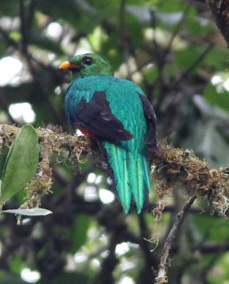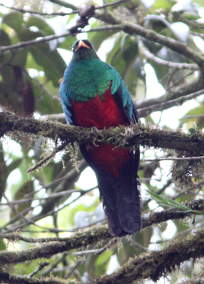Gary and Dona's, and Ram and Dawn's, and Joe and Esther's
Amazing Birding Trip to Ecuador
March, 2011
Part 9: San Isidro
Our last stay was at
San Isidro,
an ecolodge in the foothills of the Amazon basin.
It is a sister lodge of Guango,
located on its own private conservation reserve
at about 2000 m elevation.
At San Isidro we took a number of hikes specifically looking for Quetzals.
We were fortunate enough to find some on several occasions,
but they were either far away
or else we were in dense canopy and the light was terrible.
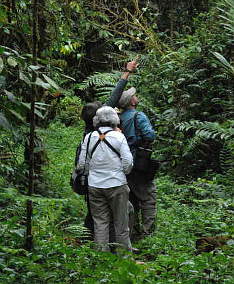 |
| On the Trail of the Elusive Quetzal |
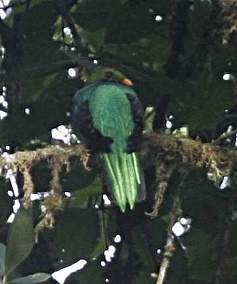 |
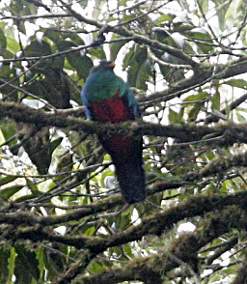 |
| Golden-Headed Quetzal |
Golden-Headed Quetzal |
There were lamps outside our cabañas in the evening,
and they attracted large numbers of moths and other insects.
They would still be there in the morning,
and they served as a great pseudo-natural bird feeder.
The whole place was alive in the mornings;
there were so many birds it was almost magical.
 |
| Lamps Outside Our Cabaña |
Soup, we discovered, is a mainstay in the Ecuadorian diet;
or at least in the eco-tourist Ecuadorian diet.
The soups were outstanding, and I think we only had a repeat once.
Since getting home we have started making more soups,
and they really hit the spot on cold and rainy days.
Our meals usually included soup before the main course.
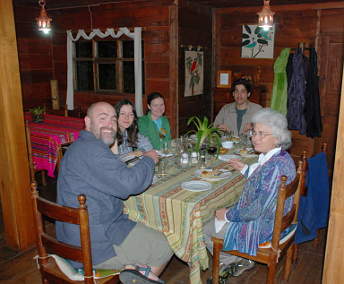 |
| Dinner at San Isidro |
The lodge advertises a number of trails,
and at verious times we hiked some of them.
But the best birding was generally around the lodge itself.
One afternoon Joe, Esther and I decided to do a long loop.
It went by a blind for a lek of some kind
(I can't remember what);
then a ways further on you came to a "beach" on the river;
and then the trail continued for another six or eight km
to end up back on the road a few km from the lodge.
The trail was wet but not too muddy,
and we made good time to the lek
and then on to the river.
However, we discovered the longer trails like this one
are not maintained frequently enough for this climate
where things grow a huge amount every year.
It appeared that not too many guests actually hiked down to the beach,
and apparently none did the circuit,
as the trail evaporated a few hundred yards after
the turn off on the short spur to the beach.
We still had another six or eight km to go,
and didn't really have time to wander around lost in the jungle.
We weren't really prepared to do that,
so prudence seemed to indicate it would be a good idea to turn around.
We did. Pooey.
Where I grew up in the Pacific Northwest
there are "nurse" trees --
a big tree falls over and rapidly disintegrates,
and as it decays its former branches effectively take root in the rotting trunk
and become whole trees themselves.
In the moist Amazonian climate,
a similar thing happens.
But in one case on this trail it was a different story --
we found new roots growing down from a tree which had broken off
and was elevated ten feet or so above the forest floor.
 |
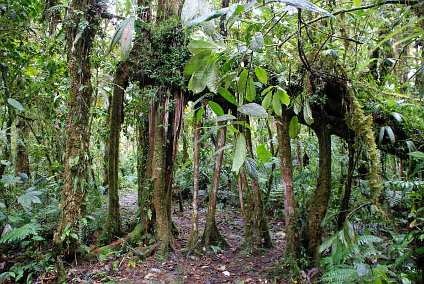 |
| Tree with Legs |
Tree with Legs |
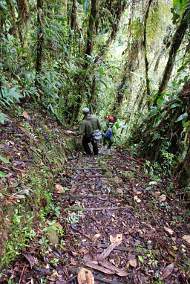 |
| Joe and Esther on Trail to the Beach |
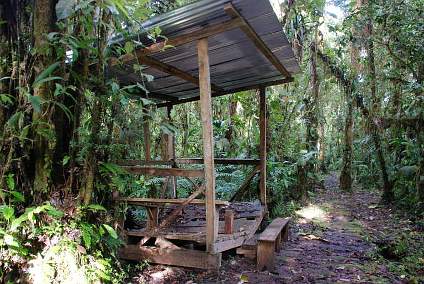 |
| Falling Down Shelter by Lek |
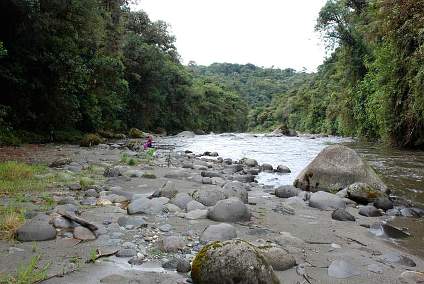 |
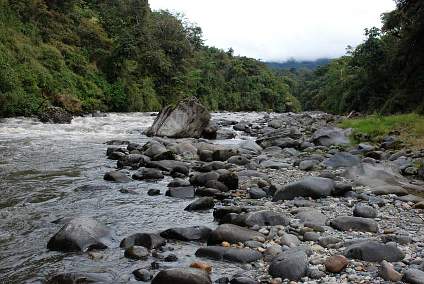 |
| The "Beach" |
The "Beach" |
They had some great signs to help you identify most of the common birds
in the area.
That was a big help for Dona and me,
as the bird guide we had was really for the western side of the Andes,
not the eastern Amazon area.
Ram and Dawn and Joe all had good field guides,
but we didn't buy one as we figured we would never use it again.
So we looked over their shoulders a lot...
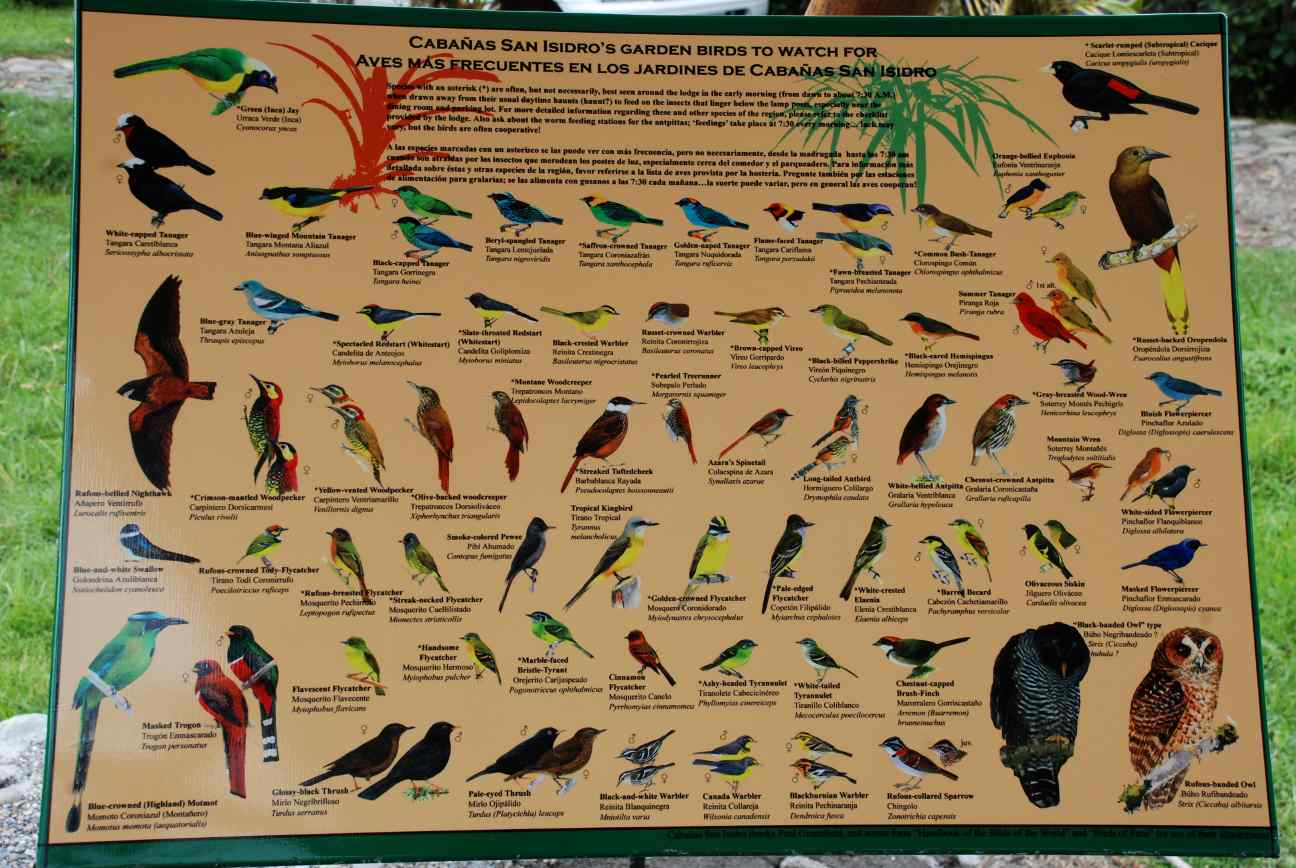 |
| Handy Bird Id Sign |
This was a big birthday trip -- half of us had birthdays on the trip.
At San Isidro, it was Esther's turn.
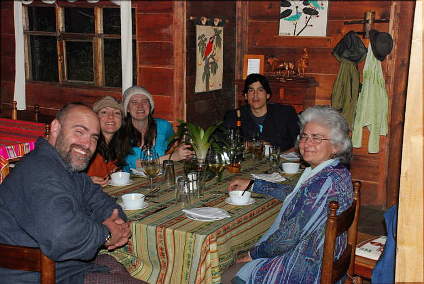 |
 |
| The Gang at Dinner |
Esther and her Birthday Cake |
 |
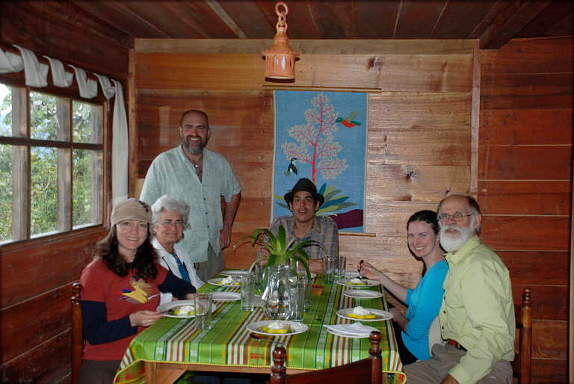 |
| Some of the Gang at San Isidro |
The Whole Group at San Isidro |
We often walked down the road looking for birds,
and one day Joe and Esther and Dona and I made it to the
research station
that is next to San Isidro and which they contribute to.
Much to Joe's surprise, a friend of his was working there for a couple of weeks!
On the way back, just about dusk, we saw a Highland Motmot,
but it was so dark we didn't get any good pictures of it.
The cabañas we stayed in were comfortable
and even had hot showers.
That was a real treat,
especially when you came back from a walk and were wet.
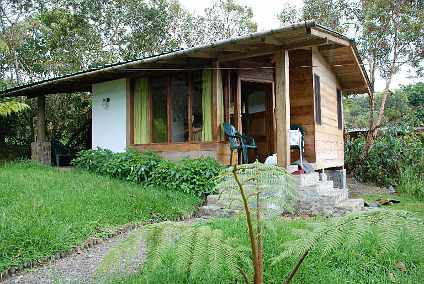 |
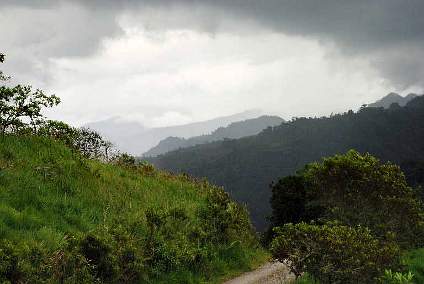 |
| Dona and My Cabaña at San Isidro |
Typical San Isidro Weather |
From San Isidro we drove back over the eastern Andes
and down to Quito in the central plateau.
As we neared Quito,
the traffic started piling up.
We discovered why about a half hour later --
all the roads converged on a one-lane bridge.
Talk about a traffic jam...
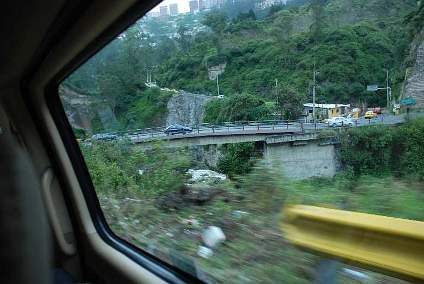 |
| One Lane Bridge Going Into Quito |
Birds at San Isidro:
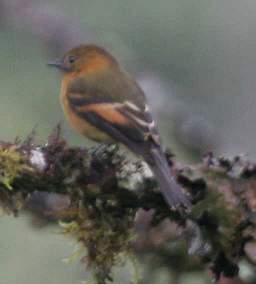 |
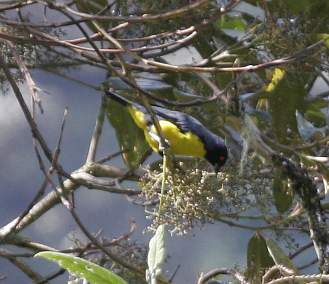 |
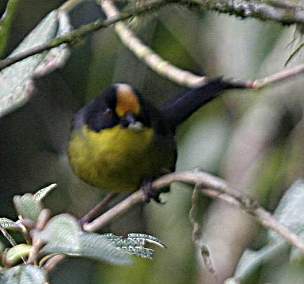 |
| Cinnamon Flycatcher |
Hooded Mountain Tanager |
Yellow-Breasted Brush Finch |
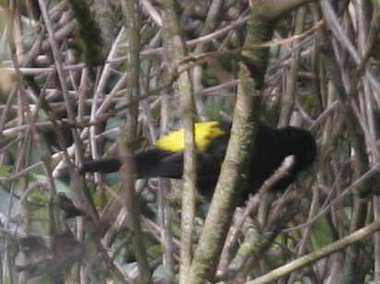 |
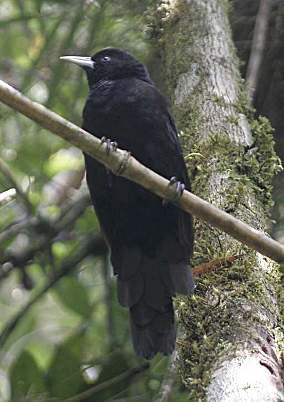 |
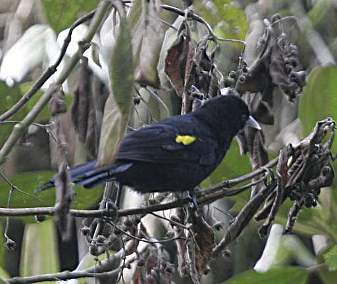 |
| Yellow-Rumped Cacique |
Yellow-Rumped Cacique |
Yellow-Rumped Cacique |
As you can see from Ram's great photo below,
the green jays don't really have all black heads;
part of it is a brilliant blue.
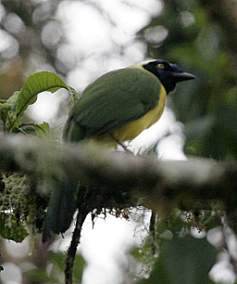 |
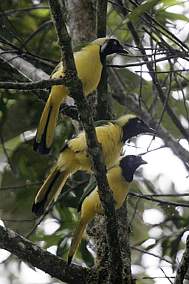 |
 |
| Green Jay |
Inquisition of Green Jays |
Green Jay
Photo by Ram Papish |
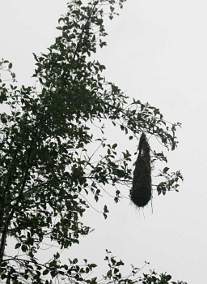 |
| Russet-Backed Oropendola Nest |
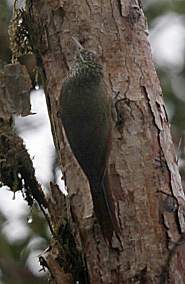 |
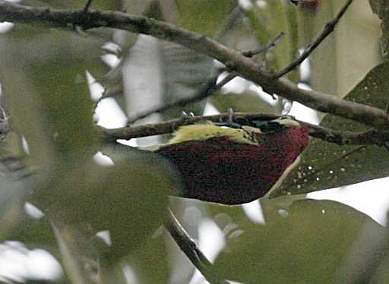 |
| Olive-Backed Wood Creeper |
Yellow-Vented Woodpecker |
 |
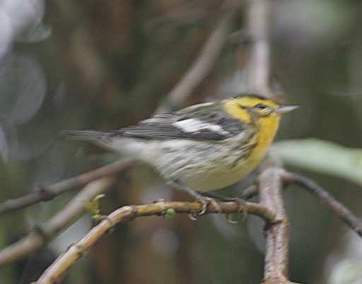 |
| Black-Billed Peppershrike |
Xxx |
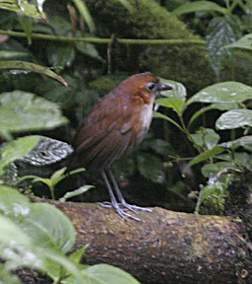 |
 |
| White-Bellied Antpitta |
White-Bellied Antpitta |
 |
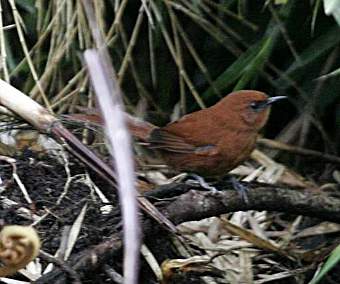 |
| Xxx |
Rufous Spinetail |
And as usual, we ran across scores of pretty butterflies.
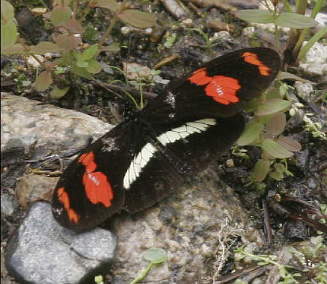 |
 |
| Butterfly |
Columbian Admiral Butterfly
(Hypanartia Fassli) |
One of the coolest things we ran across was next to impossible to see until it moved --
a Leaf Mimic Frog.
The thing looked like just another leaf on the forest floor.
The photo below doesn't do it justice,
as it's zoomed in and you can't see any of the other leaf litter around.
If you back out a reasonable distance, it's totally lost.
When I first came up to Dona and Esther peering at the ground,
I couldn't see it at all.
I stuck my face down there and I still couldn't see it,
even when they were pointing at it; finally it moved.
And yes, I did have my glasses on,
and no, they were not fogged up.
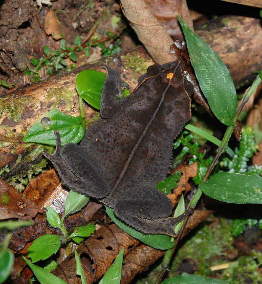 |
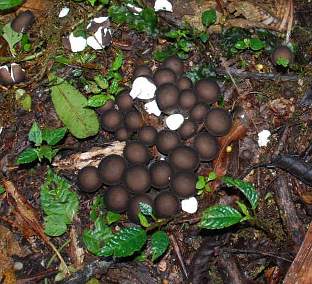 |
| Leaf Mimic Frog |
Mushrooms |
On our way over the Andes we stopped somewhere up high to look for
birds mostly only found above where we had been.
We were looking for a hummingbird with a ridiculously long tail;
I can't remember its name;
and an Andean Condor.
We did manage to see a Condor,
and a Red-Crested Cotinga.
At one point we thought we found the hummingbird,
but in the end it wasn't the one we were hoping for.
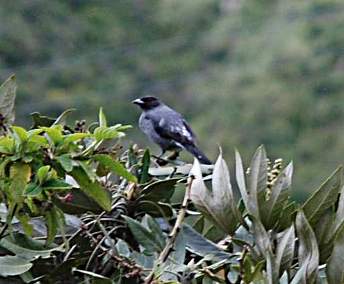 |
| Red-Crested Cotinga |
We stopped again at a good birding place on the outskirts of Quito,
still hoping for some of the elusive special Ecuadorian birds.
We didn't find any, but I did get pictures of some Grosbeaks.
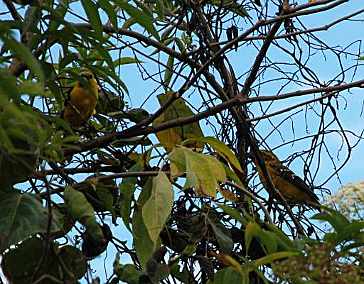 |
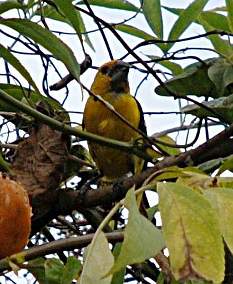 |
| Golden-Bellied Grossbeak |
Golden-Bellied Grossbeak |
Then it was on to Quito,
a good night's sleep,
and home.




